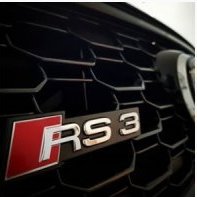[Closed] Borg Warner Efr Series Turbos
Announcements
-
Similar Content
-
Latest Posts
-
Yeah one of the first things I out in when I started having catch can filling up issues. Still prefer to empty 1-2 times a track day rather than every session
-
You'll find this link is probably more useful Performance Turbochargers - Garrett - G GT GTX GTW Series Turbo TBG G35 1150 map may not even get added to my list depending on how it looks, the G35 1050 already is a mixed bag for making the numbers you would expect from the compressor map due to mismatch - I don't know how another 10lb/min of compressor flow is going to make that any better. I've left out others for similar reasons as it's already getting quite big. In terms of Precision, provide me with legit compressor maps for them and I'll do my thing I'll add some more of the newer Xona Rotor options are they're pretty boss, I'd take a 68mm Xona over a G35 "1150" any day of the week - or Precision for that matter.
-
Ahh got it. Well maybe install a drain for the catch can somewhere down low and accessible like a wheel well too....
-
Before you blow your car up, have you checked you've made all the correct modifications to the wiring if you're still using the RB20DE loom? Some things to look at: The pin used for the map sensor on the RB25DET, is the same pin used on the RB20DE for the Ring Gear Crankshaft Position Sensor, no idea what you've got it plugged into now. The turbo pressure control valve solenoid you're talking about on the RB25DET, the same pin is used for the Variable Air Intake Control Valve on the RB20DE. The factory manual has the wiring pinouts in it for you to check everything. It also has the diagnostics process to read codes out. In addition, there's a great table that shows what sensors and what actuators not functioning will relate to which signals. And Nissan confirm the as everyone else has from experience, the Solenoid being disconnected won't cause a fuel cut. However, the turbo pressure sensor being missing / wrong, WILL cause a fuel cut. https://www.nicoclub.com/service-manual?fsm=Skyline%2FR34-Workshop-Manual-English.pdf
-
I've been hunting info on the G Series II - this is best I have found so far(Link below). Still waiting on the G35-1150 comp map, kind of very keen So how do we go about getting precision on that little table of yours ? https://turbosbytm.com/sites/default/files/product/technical-info/Garrett-G-Series-II-Product_Flyer 25 30 35_1.pdf
-








Recommended Posts